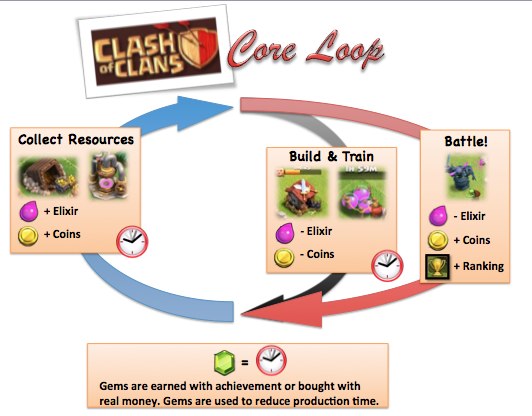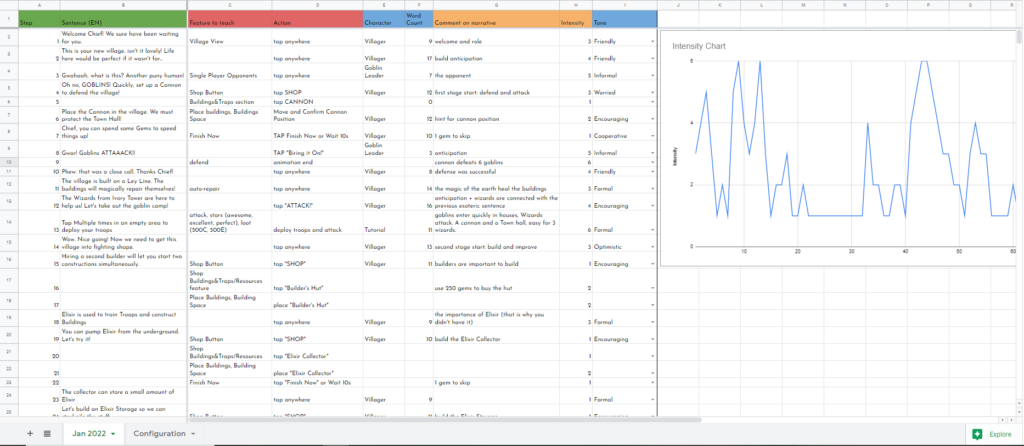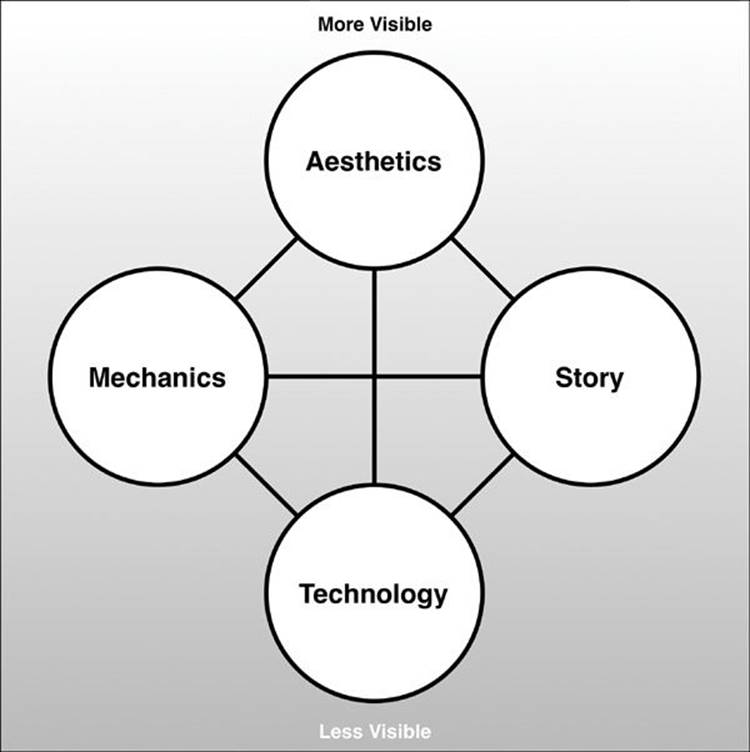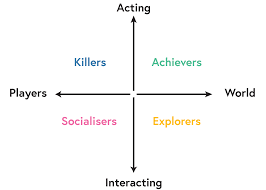Read the first part of the analysis here.
In this second part I want to write on what I experienced personally during the tutorial experience. It is very important to write down notes for a game designer.
If you have no time for that, you have no time to learn.
The game welcomes you with the main view of the Village. Here the Player can already decide “this is my kind of game” or quit. The welcome is given by the Villager, one of the two characters introduced in the tutorial. The girl has changed visually:
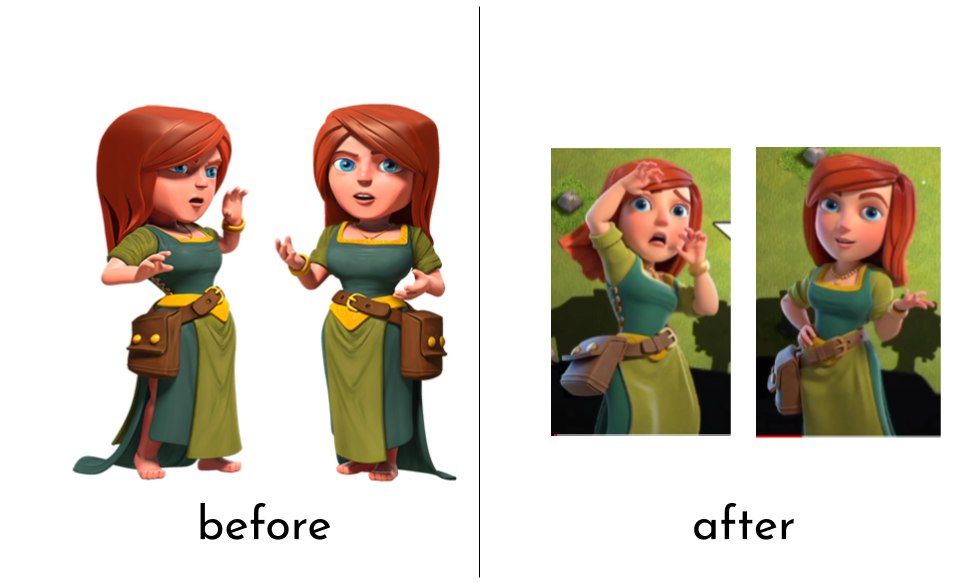
Her expressivity has become more exaggerated and her proportions are nearest to the beauty standards. I preferred the old one, since she reminded me more of a tough and rude viking. But I get why this one was selected: especially on a small screen you need to emphasize gestures and expressions.
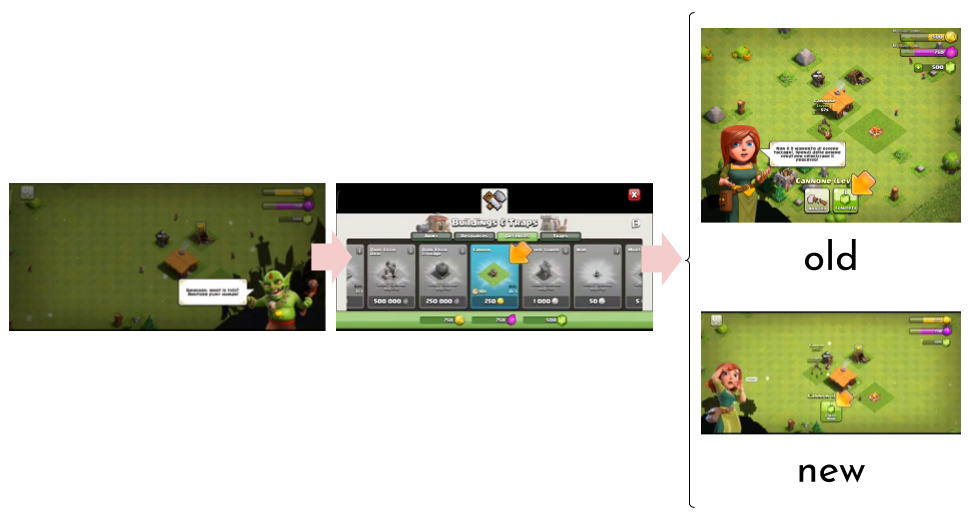
The first mechanic is introduced. The tutorial makes you build a cannon to defend from a goblins’ raid. The sequence is pretty memorable. The goblin is fun and informal, but uses sophisticated words and spells correctly. The animation after the build, which is an idle mechanic with its rewards per se in the game. The defense mechanic is not completely introduced to the Players. Players will learn it alone later simply by playing and discovering they can tap on graves to earn some extra elixirs. Which is pretty smart!

Just after, the Player learns the attack feature and all of its mechanics. A group of 5 wizards join your village and you can use them to get revenge with the goblins. First of all, I believe that wizards are chosen because they are narratively meaningful. In fact the Villager has explained that your village is built on a Ley Line, so that your buildings will auto-repair. Magic is on the air. Second, wizards are pretty fast destroying buildings which is great to keep the tutorial shorter. Last, wizards are a kind of troops that a Player can unlock later in the game. So that the Players can get a hint of future unlocks and test two troops during the tutorial (later, they will use the barbarians).
The third part of the tutorial puts its focus on the importance of building and improving your village. I believe that the Developers, after giving an hint on the possible thrills and best moments, considered proper for the Players to really learn the core loop deeply. The Player builds 5 important resources, completing the core loop five times. It is more than enough to learn the basics of the game.
The tone of the Villager is very formal, and that is when I want to work for personal exercise the next few days. I believe that this part hasn’t aged well and I would like to improve it as an exercise. Many clones of this fantastic game popped out and also many evolutions are at the door. The next successful game can be possibly based on this masterpiece. Especially for new players, I believe that the Villager is a character which should have a more relatable personality. Messy, complicated and interesting. Just like people in real life!
The 2022 tutorial ends with one of the newest features of the game: challenges and rewards. The overview is too fast and based on skipping dialogues, more than actually learning something meaningful like in the first part. Which makes the tutorial experience ending with many questions. This can be interesting for newbie Players, especially for the most hardcore part of the audience that can perceive suddenly that this game is not linear but deep.
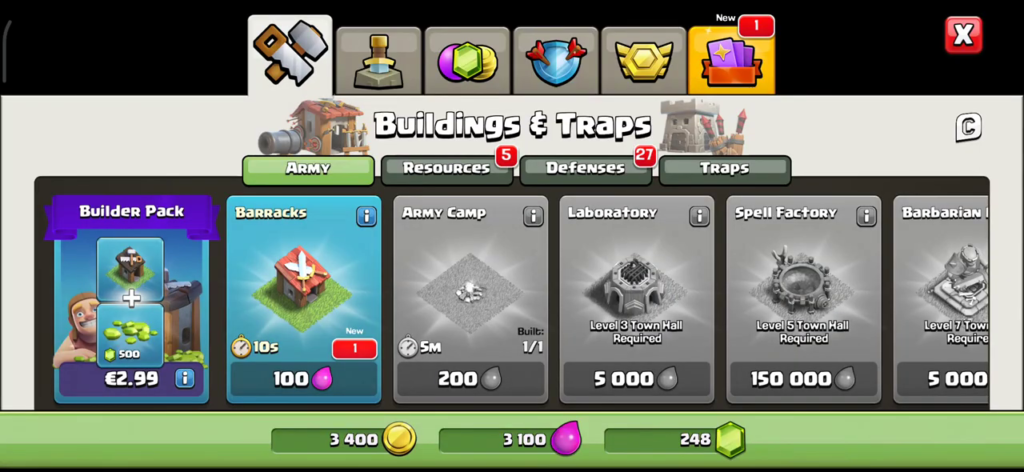
When the Players return into the SHOP section, they will find the first offer which is the third builder. No pop-up, no constant prompts looking for no-brain conversions. The value is there. During the tutorial you entered the SHOP enough times and now you know that the SHOP is critical to the experience. You will find the offer and, if you want, you will convert. That is what I call: treating Players with respect.
